Delphix as a backup solution to SQL Server
Using Delphix as a backup solution to SQL Server
Delphix provides you the option to automatically manage backups from SQL Server source databases into the Delphix Engine. Prior to Delphix 4.2, users could not link source databases that were backed up by unsupported backup software. In Delphix 4.2, a feature known as Delphix Managed Backups was introduced that allows you to have Delphix take and manage backups from your source database directly into Delphix storage. This is the first step in Delphix becoming a full-featured backup solution for SQL Server databases. When the Delphix Engine manages the backups for a dSource, it takes regular, copy-only full backups of the source database, so activating the feature will not interfere with existing backup management solutions. You can configure the schedule of when the Delphix Engine takes these copy-only full backups by specifying a SnapSync policy for the dSource. You can change the SnapSync policy for a dSource at any time by visiting the policy screen; there, you can either select a new SnapSync policy or modify the current one.
If you use a backup solution that is not supported by Delphix, you cannot use your existing backups to keep your dSources in sync. However, enabling Delphix Managed Backups will overcome this issue by using automatic copy-only full backups to keep dSources in sync. Currently, dSources linked when this feature is enabled will not support LogSync functionality, which means that you can only provision VDBs from snapshots and not from any time between snapshots. Additionally, in the current release, the Delphix Engine cannot take differential or transaction log backups of the source database.
Linking SQL Server dSources with Delphix managed backups
The Data Management page of the link wizard for SQL Server dSources provides the option to enable Delphix Managed Backups.
It possible to enable this feature here at link time or toggle it on after the link for future syncs. If you enable this feature, the dSource can only use copy-only full backups taken by the Delphix Engine to stay in sync with its source; the Delphix Engine will prohibit syncing using existing backups. Checking the Enabled box results in the following changes to the Data Management page:
The initial load option is set to a copy-only full backup taken by the Delphix Engine
The ability to provide a backup path disappears
A SnapSync policy selection screen appears in the Policies page
You can select from the list of existing SnapSync policies if the one you want doesn't exist you will need to create a new one on the Policies page under the Manage dropdown. Proceeding through the remainder of the link wizard will create a dSource with Delphix-managed backups enabled. You can confirm that a dSource has the feature by selecting the dSource and going to the Configuration > Data Management tab after creation and checking the Delphix Managed Backups section, as displayed below:

To disable/enable this feature after linking:
Toggling Delphix Managed backups is supported for SQL Server dSources. This means a dSource that was previously created with Delphix Managed Enabled can have regular validated sync and similarly a dSource that had external backups can use Delphix Managed Backups.
To disable Delphix Managed Backups for a specific dSource, select that specific dataset and go to Data Management tab under the Configuration tab.
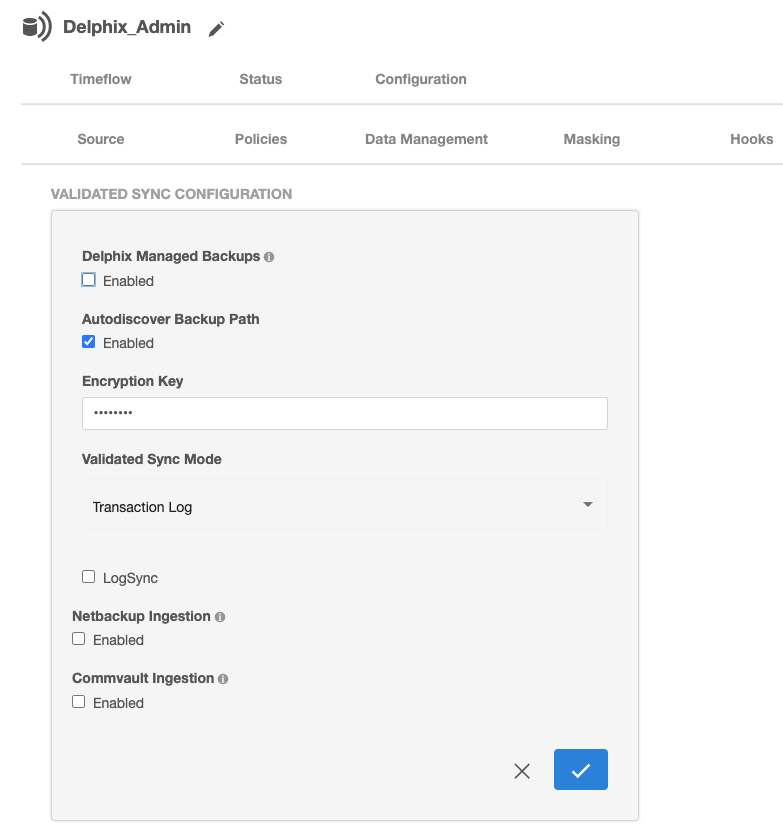
Click the edit button and uncheck this feature. Then update all new inputs.
To enable this feature just go to the same edit menu.
Backup compression feature overview
Since Delphix Engine 5.2, the Delphix Engine has allowed compression to be enabled ("forced") for SQL Server backups which use Delphix Managed Backups. Delphix Managed Backups are used to synchronize SQL Server dSources when existing SQL Server backup files cannot be made available to the Staging server, or if a third-party backup vendor is used that is not yet supported by Delphix. For more information on this functionality see Delphix as a Backup Solution to SQL Server and Linking a dSource with SQL Server.
Backup compression is preferable in the following situations when:
The default backup compression setting for the Source SQL Server instance is Disabled (0)
The Source database does not use Transparent Data Encryption (TDE)
The Source server has available CPU resources to perform compression
Where the compression ratio of a compressed backup exceeds 3:1, this will reduce the amount of data (by half) that must be transferred over the network to perform a backup, resulting in much faster SnapSync operations.
How to enable backup compression
If the SQL Server instance's default backup compression setting is enabled (see Microsoft's document View or Configure the backup compression default Server Configuration Option), no specific action is required. Backups will automatically be compressed in accordance with this setting.
If backups are not automatically compressed, the Delphix Engine (5.2 and later) can be configured to force compressed backups using the following steps:
Login to the Delphix Engine's Management interface.
Open the Manage > Datasets screen.
Locate and select the dSource (using the tree on the left).
Navigate to the Configuration > Data Management pane.
Click the Edit (pencil) icon to modify the Validated Sync settings.
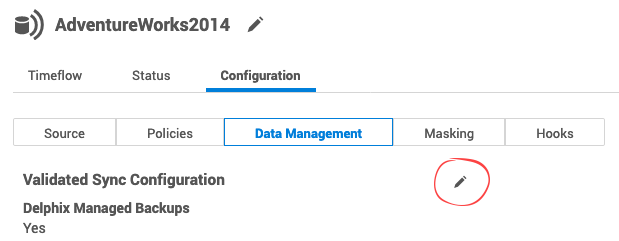
Select the Force Compression checkbox, then the select the Tick icon to save the changes
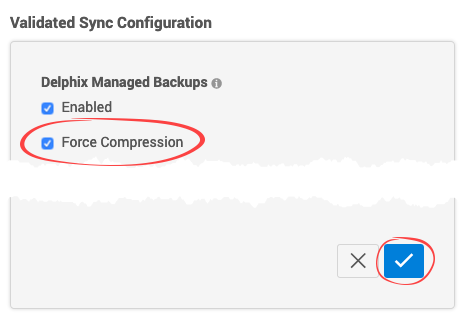
The change will automatically take effect during the next scheduled Snapshot/SnapSync operation.
Delphix managed backups on secondary nodes of alwaysOn availability group cluster
The Always On availability groups feature is a high-availability and disaster-recovery solution that provides an enterprise-level alternative to database mirroring. Introduced in SQL Server 2012 (11.x), Always On availability groups maximizes the availability of a set of user databases for an enterprise. An availability group supports a failover environment for a discrete set of user databases, known as availability databases, that failover together. An availability group supports a set of read-write primary databases and one to eight sets of corresponding secondary databases. Optionally, secondary databases can be made available for read-only access and/or some backup operations. Some customers prefer using secondary nodes for backup to reduce the load on the primary node while some customers are OK with using the primary node. To provide more flexibility for customers using Always On availability groups with Delphix Managed backups, delphix provides an option to choose backup policy during linking of a dSource.
They can pick one of the following options that describe their backup policy as shown below.
Primary (default option): Backups are taken only on the primary node.
Secondary Only: Customers who never want to use primarily for their backups must choose this option as it ensures backups never go to the primary node. If the secondary nodes are down, the backups fail but do not use primary at all.
Secondary preferred: As the name suggests, one of the secondary nodes is used for backup. The backup will be taken on primary if none of the secondary nodes can be used for backup. So, customers who want reliable backups even if they are taken on the primary node if required should use this option.
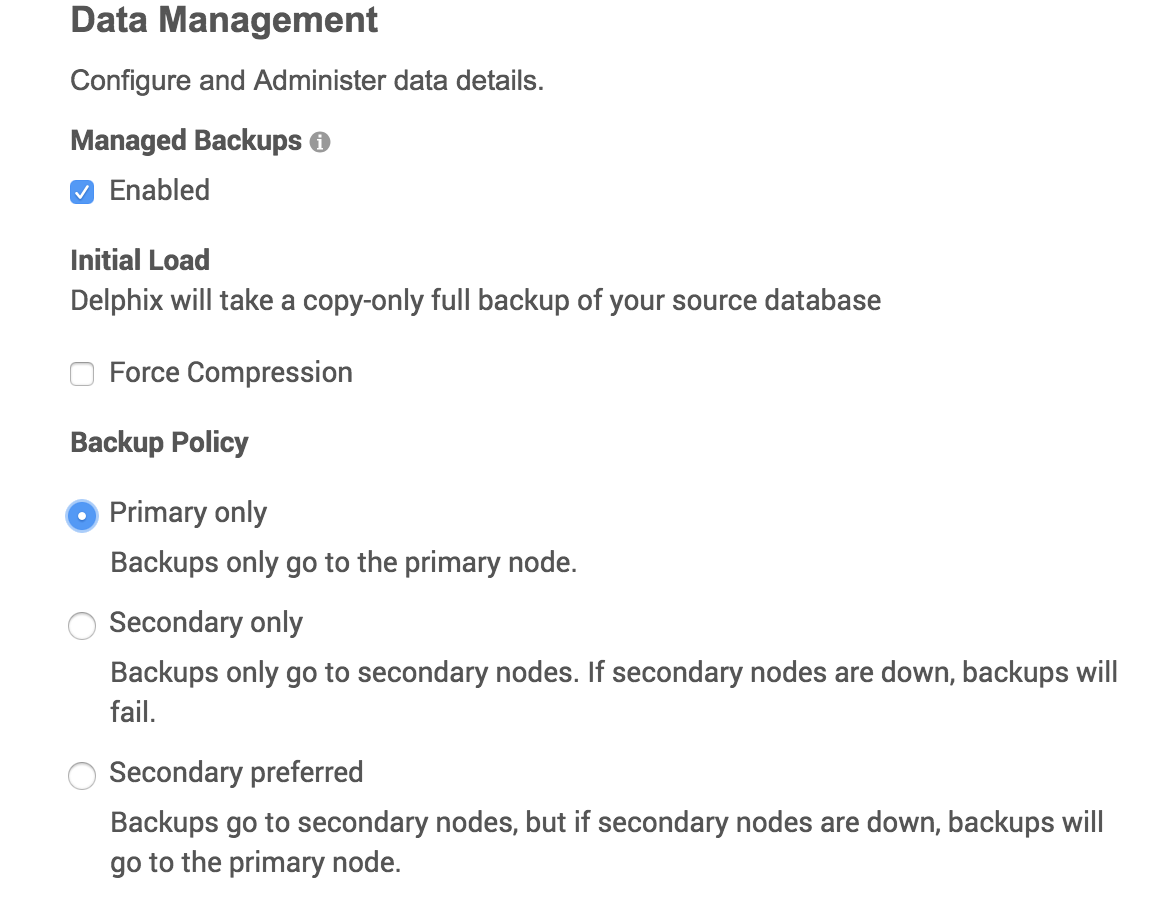
The backup policy can be changed after dSource creation too as shown below.
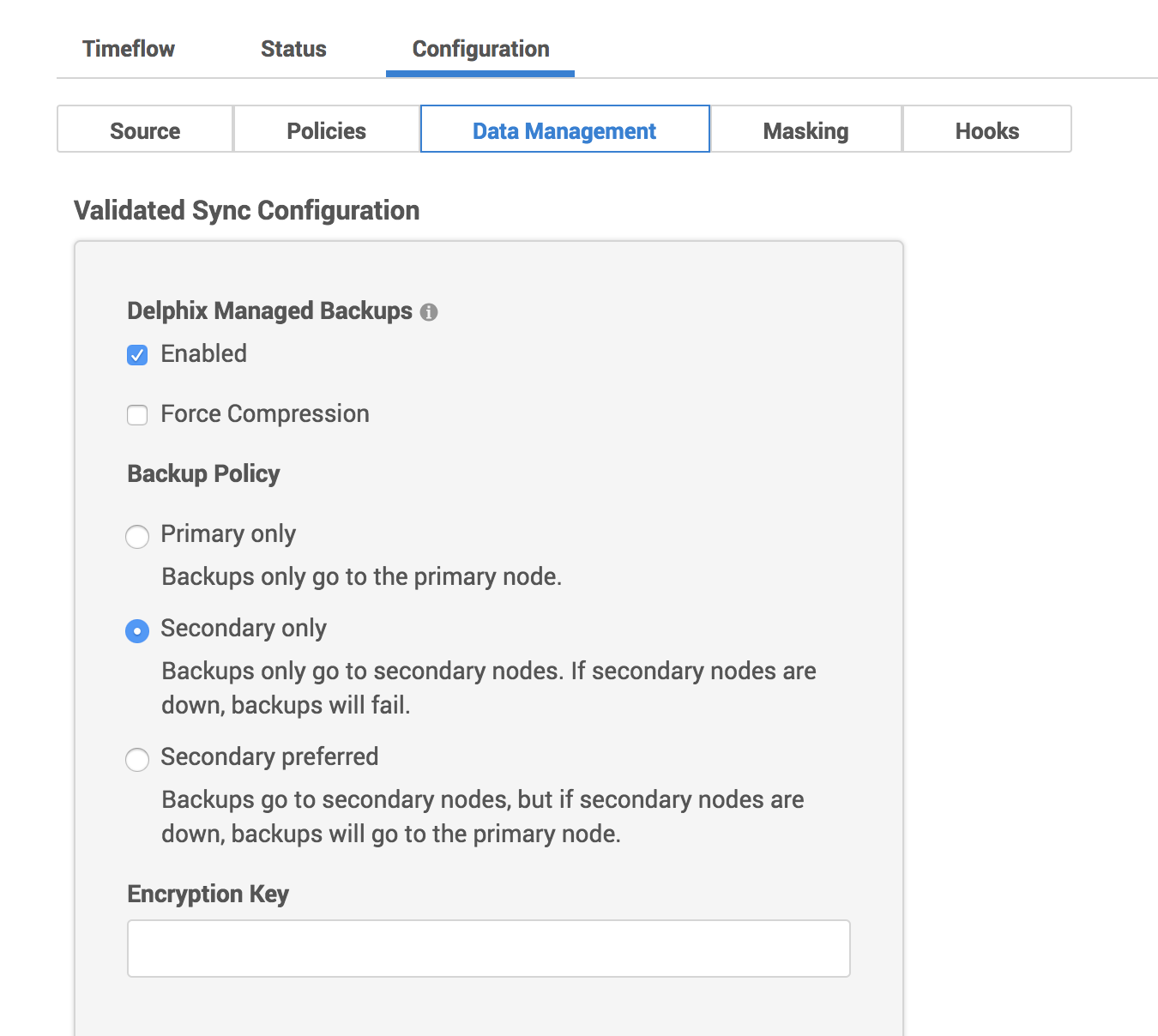
The backup policy is not only provided during the linking phase of a dsource but also during the manual snapsync phase too to provide more flexibility to customers as shown below. Default option is the Backup Policy selected during linking phase.
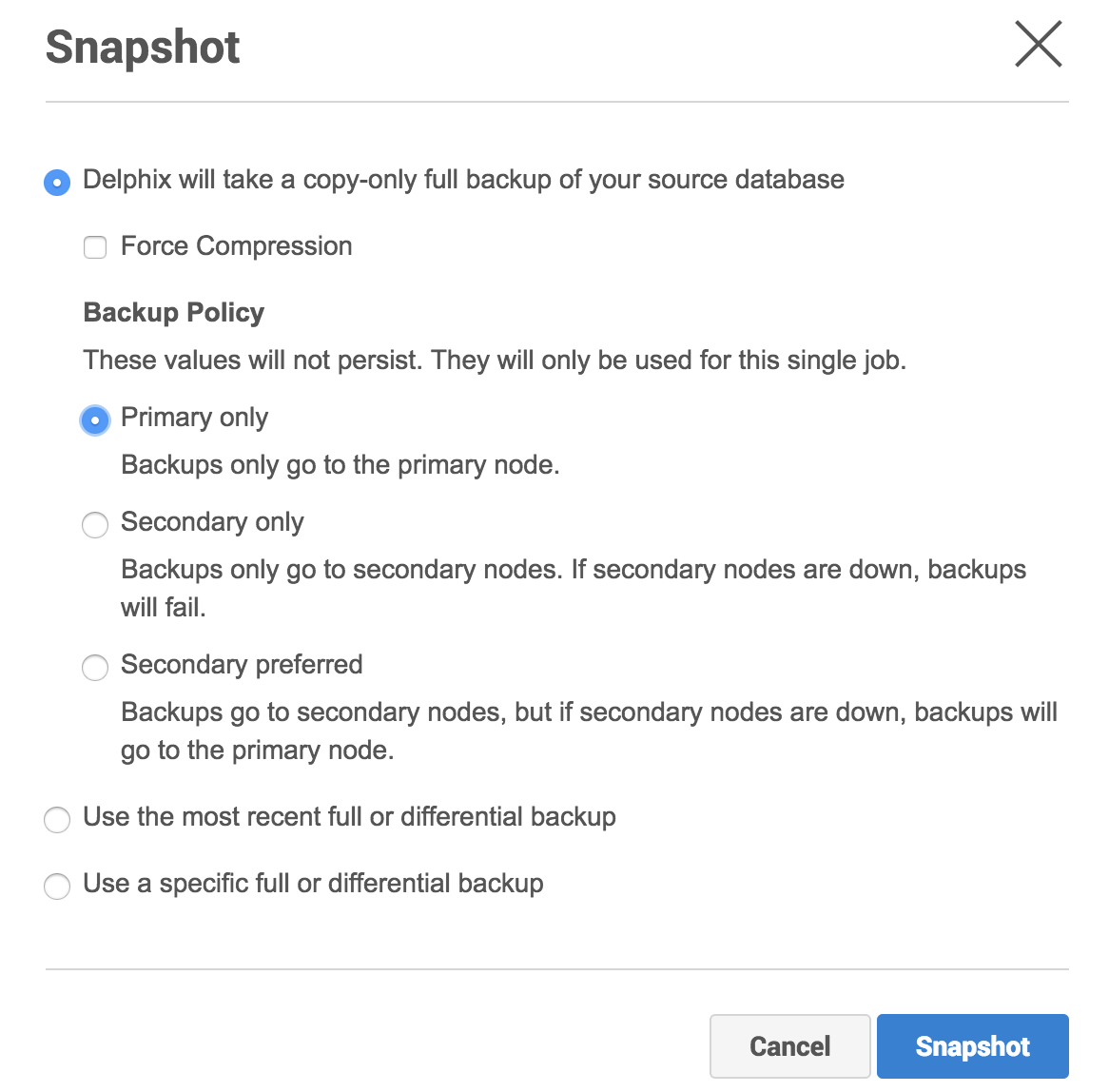
Understanding snapSync policies
SnapSync policies provide you the ability to specify how frequently the Delphix Engine takes a copy-only full backup of a source database when Delphix Managed Backups are enabled. Selecting an initial SnapSync policy is mandatory at dSource link time. However, you can change the SnapSync policy that the Delphix Engine applies to a dSource at any time by visiting the policy management screen:
Click Manage.
Click Policies.
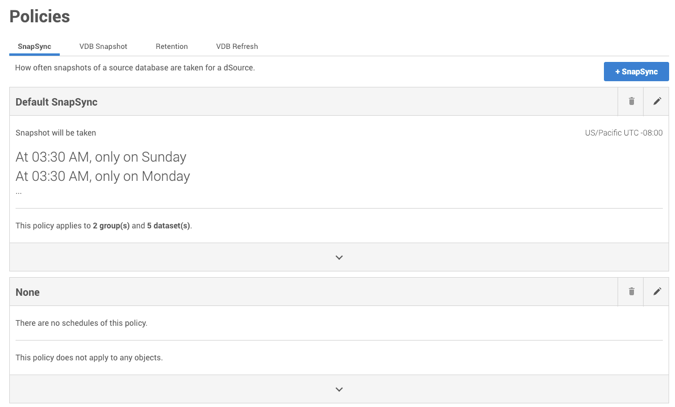
Check SnapSync Policy
For dSources that have Delphix-managed backups enabled, the current SnapSync policy will be displayed under the SnapSync column. The rows corresponding to dSources that do not use Delphix Managed Backups will be grayed out. Clicking the current SnapSync policy for a dSource will display a drop-down menu of existing SnapSync policies along with the option to create a new SnapSync policy. Selecting a SnapSync policy from this list will change the current SnapSync policy for the dSource. When creating a new policy, you will see the following screen:
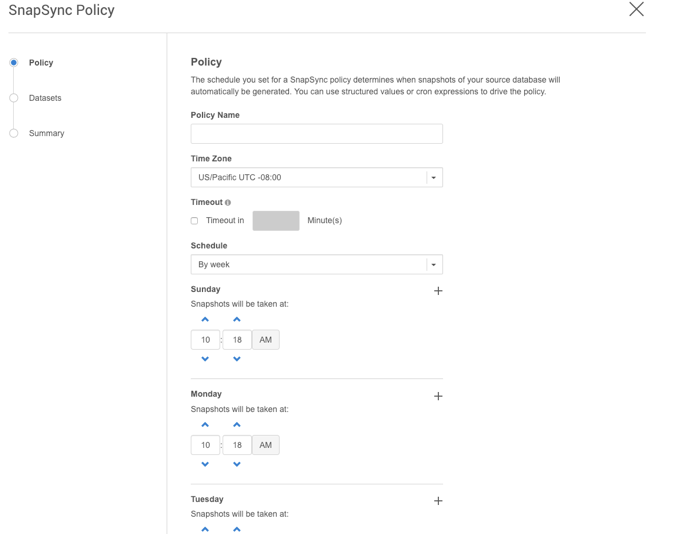
Create New SnapSync Policy
Here, you can configure the frequency with which the Delphix Engine takes backups of your source database. You can modify these schedules at any time by clicking the Modify Policy Templates button in the upper right-hand corner of the policy management screen.
The Timeout field above specifies how long a SnapSync job is allowed to run before it is terminated. If a SnapSync job exceeds its timeout window, the Delphix Engine discards the new backup and rolls back the dSource to the most recent snapshot.
